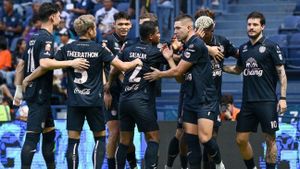The global drinks industry is poised to navigate through complex challenges and opportunities as 2025 approaches, according to research from IWSR, the authority on beverage alcohol data and intelligence. Characterized by persistent economic uncertainty, global inflation, and varying consumer confidence, the beverage alcohol market is evidently subdued but rich with potential for growth.
Emerging economies—particularly India, South Africa, and several Southeast Asian nations—are entering the spotlight with buoyant conditions, contrasting the pressures felt within mature markets like the United States and Europe. These regions are showing signs of promise, buoyed by an influx of younger consumers, burgeoning middle classes, and the overall trend toward urbanization. Such shifts signal not only resilience but also increased interest in premium and innovative products, reflective of consumer willingness to explore new drinking occasions and categories.
Emily Neill, Chief Operating Officer of Research and Operations at IWSR, notes, “The drinks industry faces a subdued but opportunity-rich environment in 2025.” She emphasizes the significance of channel shifts and highlights the nascent growth seen within the on-premise market as bars and restaurants gradually recover. Digital platforms are also becoming increasingly influential, altering how consumers make purchasing decisions both online and offline.
Turning to consumer behavior, IWSR has outlined five key trends shaping the beverage alcohol market this year. Foremost among these is the implementation of new moderation strategies. Susie Goldspink, Senior Insights Manager for RTDs and No/Low Alcohol, states, “Drinkers are now more habitual in their control of alcohol intake.” This cultural shift toward moderation is sweeping across age groups, regions, and demographics, marking moderation as more than just a fad limited to younger legal drinking age consumers.
Among these strategies are:
- Lighter Consumption: A notable trend is the growth of 'light' drinkers, who consume alcohol less frequently and with less intensity. This category has become the largest segment across 15 key markets covered by IWSR’s Bevtrac consumer research.
- Temporary Abstinence: Increasing numbers of consumers are choosing periods of abstinence. For example, 72% of affluent drinkers in major Indian cities now report periods of being alcohol-free. Similar figures emerge from South Africa and Brazil, with over half of their populations also following suit.
- Single-Category Occasions: There seems to be a growing preference for limiting alcohol consumption to one type of beverage at any occasion. Recent data shows the average number of different beverage categories consumed per occasion dropped from 2.4 to 1.8 between 2023 and 2024 across key markets.
These trends highlight not only individual behavioral changes but also broader market impacts, as brands will need to adapt to this shifting consumer mindset. The industry realizes the necessity of growth opportunities to be evaluated precisely, on market, category, and price-point bases—a requirement for success moving forward.
The potential for digital platforms to capture this change is immense. With consumers increasingly gravitating toward online purchasing avenues, the role of digital commerce cannot be overstated. IWSR shows evidence of growth, asserting the rise of innovative products aligns with younger consumers' tendency to experiment, fostering new occasions for drinking.
Driving these insights forward, brands will need to tailor their marketing strategies to engage modern consumers effectively. It will not suffice to remain passive; brands must engage their audiences authentically and creatively to thrive.
With the trends of moderation and optimal consumption forming the foundation of the beverage alcohol market for 2025, it is clear industry players must hone their approach to product offerings and marketing strategies. IWSR’s research paints not only the challenges faced but also offers insight-filled routes to navigate the uncertainty and build relationships with consumers trending toward moderation and thoughtful consumption.



